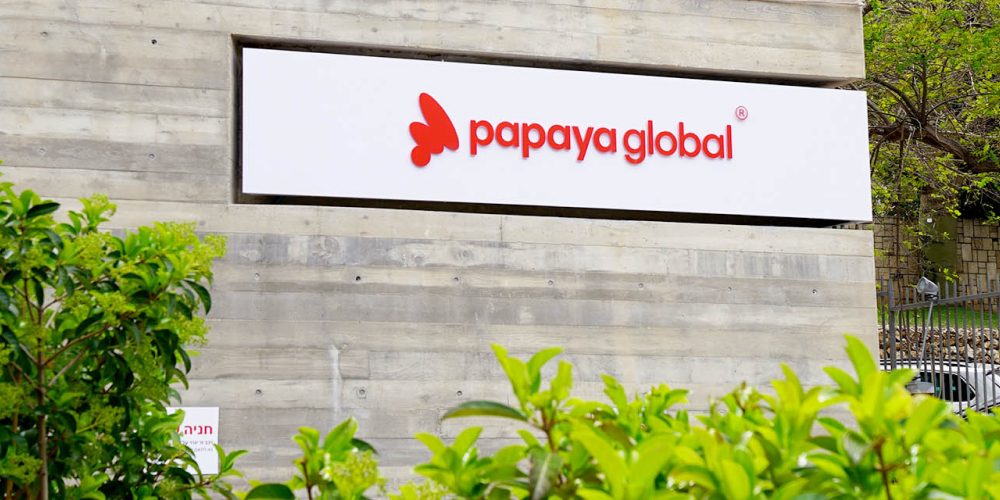
Industry:Banking and Financial Services
Region:Europe
Region:North America
Client:Acciona
Acciona's Services Division Achieves Important Time and Cost Savings in HR and Back-Office Operations with RPA

€100k
savings in one process alone
50
HR, procurement, and back-office processes automated
1-2
weeks robot development times
18 FTEs
time savings
Client Overview
Acciona is a Spanish multinational conglomerate group headquartered in Madrid and dedicated to the development and management of infrastructures (construction, water, industrial, and services) and renewable energies around the world. It is listed on the Spanish Stock Exchange IBEX 35 and is widely regarded as a point of reference in its sector. Its vision is to fulfill the challenge of achieving sustainable development in all its business areas.
The services business of Spanish multinational Acciona has pioneered the adoption of robotic process automation (RPA) within the group using the UiPath Platform to save time and improve operational efficiency, particularly in the Human Resources (HR) department that must process the data and documentation of thousands of temporary workers and contractors.
The Services Division at Acciona is a key business unit within the Spanish multinational group and has more than 50 years’ experience in offering integral service solutions in infrastructures, the industrial sector, and cities. It operates and holds assets in a variety of areas such as facility services, airport and rail services, renewable energies, healthcare services, and urban and environmental services, among others.
By the very nature of its business offering, it is a human-centric organization that relies heavily on the management and support of tens of thousands of field workers, whom it considers its greatest asset. The administration of the workforce, many of whom are hired and rehired on short-term or temporary contracts according to client demand, is a data-intensive and time-consuming part of the business. The HR department shoulders a large part of the operational responsibility for ensuring that the business can continuously provide its clients with quality and efficient services.
Acciona has always given high priority to the use of innovative, efficient management models that help the business to optimize quality, flexibility, and costs. It has a team of highly trained professionals who analyze customers' needs, rapidly detecting the points of improvement and potential savings, and applying the changes required. And automation technology has come to play a vital role in this strategy.
The technology team, headed by the chief information officer (CIO) of Acciona’s Service Division, José Luis Rosell, and IT Manager Marta Rodriguez, quickly realized that RPA was a perfect enabler in the drive to achieve higher efficiencies and greater savings within the company. In 2017, they teamed up together with Nieves de la Torre, the division’s HR Manager and the main person responsible within the organization for identifying and defining which processes could and should be automated. Their main objective at the start was to reduce the amount of time spent on tasks that didn’t add any real value to the business and free up staff hours for creative and value-add processes that would help the business grow and be more efficient.
We had a lot of data processing tasks which were time consuming, tedious, and demotivating for the HR team to do. Furthermore, we usually had no time left afterwards to actually analyze the data in order to gain insight into where improvements could be made to increase client satisfaction. We thought that if we could automate these repetitive chores, this would give the team time to work on strategically important processes as well as bettering their working environment as a whole.
Marta Rodriguez • IT Manager at Acciona
They needed a quick solution that offered a time to market of one to two weeks and which could integrate seamlessly with their legacy systems. They were approached by integration partners Price Waterhouse Cooper (PwC) who proposed a proof of concept (PoC) based on UiPath RPA robots and built around a specific business case—the processing of sick notes from employees and workers—and the pilot project was launched.
From PoC to full internal development capabilities
The pilot project was hugely successful, cutting times for processing and crunching data about sick and absent workers, and saving the HR department 1.5 FTEs.
“We were in love with the technology,” comments Rodriguez. “It changes the game and forces changes in the mindset around the approach to the different challenges, implying a different way of thinking than traditional software projects. It’s so simple once you understand it, and at the same time very powerful.”
The decision was therefore taken to go one step further and start the in-house development of other robots to automate more mission-critical tasks. To achieve this, they enlisted the expertise of Gustavo González Arroyo, RPA Analyst and Developer, to work with IT and liaise with Nieves de la Torre in HR in the identification of new potential business cases for automation.
Next, the team developed a software robot to assist in the task of registering and de-registering temporary service personnel on an internal platform which then communicates with the Social Security office. This involves the processing of large numbers of temporary contracts (nearly 20,000 in the year 2019), and typically requires up to 15 minutes per contract when done manually. With the UiPath robot, not only was the process time drastically reduced, but also the cost savings to the company increased notably.
“We did an internal assessment of various automation technologies available and we decided to continue with UiPath based on the good reviews by analysts and sound advice from our partners,” says Rosell. “Also because we could see that UiPath technical capabilities could help us achieve a quick adoption of RPA by the team.”
For Rosell and his team, access to both the UiPath Community (its unique global knowledge-sharing network of over 55,000 RPA professionals) and the UiPath Academy (for training and certifying staff in the use of RPA) were also highly influential in their decision to continue working with the UiPath Platform.
RPA combined with process re-engineering drives greater returns
Today, RPA deployment in Acciona is still relatively small, with six unattended robots and one attended bot, plus UiPath Orchestrator, but it punches way above its weight. Up to 50 processes have been automated: 30 processes in the HR Department alone, while others are in key areas such as purchasing and operations. In many instances, the decision to automate a process forces the team to re-engineer it completely, which creates increased efficiency even before the robot is operational.
“RPA technology has provided us with a tool to optimize processes, which up until now required a great deal of human resources, but gave little in return in terms of value,” says Nieves de la Torre. “Throughout all areas of the company, we are continuously reengineering all of our processes in order improve our work system and take it to the next level, and in almost all of our analysis we see that we can put RPA technology to work and obtain quick results. It has become a key element for all our processes.”
At first, the staff at Acciona was hesitant and unsure about the technology, and many had concerns that ‘the robots would take their jobs’ away. Rosell and his team realized early on that it was important to reassure employees that automation was their ally. After showing employees a series of videos and presentations to explain how RPA works and how it can empower individuals in the workplace, that reluctance soon turned into curiosity and the desire to know more.
“Once they became aware of how RPA could improve their daily workload, many of those who initially saw it as a threat to their jobs were the ones who come to us with new ideas for automation,” says Rodriguez.
With each new proposal for automation, a business case is drafted as a first step. This is done through a collaboration between business and technology managers, where the process is analyzed to determine what the expected outcome would be, to calculate and predict the ROI, and to identify the potential problems that might arise.
The returns for the company resulting from the use of RPA robots are immediate and positive. Not only do they achieve important savings in costs and human resources, but automation also allows the business to improve operations and enhance client satisfaction, dedicate labor hours saved to analyzing data to gain business insights rather than just crunching it, and cope better with seasonal peaks in workloads. All of which adds up to help the Service Division grow and maintain a competitive edge in an industry were margins are typically tight, as well as motivating staff to work better.
Being rules based, the robots also help eliminate errors, guarantee delivery times, and ensure fulfillment of client service-level agreements (SLAs). In one process that has been fully automated, the robot works throughout the night carrying out monotonous tasks that before required six people working full time during the day. “It’s like having a co-worker who never makes mistakes, and gets the job done always on time”, says Rodriguez.
We chose the UiPath RPA platform at PwC’s recommendation and following a full internal assessment to evaluate all available technologies at the beginning of our RPA journey where we determined it was a perfect fit for what we were trying to achieve. It’s not a dark technology where you can see it working but you don’t how it works. The software platform is simple, quick and supported by an extensive community, as well as having a very clear and accessible pricing model.
Marta Rodriguez • IT Manager at Acciona
The future
Looking ahead to the future, Rosell says that it is bright. The team has already begun to demonstrate to other divisions in the group potential of RPA, and plans are being developed to expand its use internationally to some of the more than 18 countries where the Service division also operates. In Spain, the team wants to take full advantage of the UiPath Academy to train more business users, as well as explore the infinite possibilities for continued community-based development offered by UiPath Community.
“Ever since I started using UiPath Platform as a working tool, I have seen how much importance they give to their user's experience,” explains Gonzalez. “UiPath is a very user-friendly software that it can easily be used to automate simple ideas, yet it offers a much wider range of capabilities. That’s why training in this automation software is essential in order to show users how to make the most of it. Through the UiPath Academy, you can develop your skills, acquiring the knowledge and technical capacities to automate much more complex processes as well as everything you need to know about managing UiPath Orchestrator.”
Automation technology allows us to face the challenges of our business in a quick, reliable and efficient way. What started as a proof of concept has become a key technology in our portfolio of solutions due to its capabilities and development times.
Jose Luis Rosell • CIO at Acciona
Related case studies
Ready for your own case study?
Speak to our team of knowledgeable experts and learn how you can benefit from RPA.




